Herb GardeningWhat is an Herb?Herb is short for herbaceous which botanically means a plant that grows without a woody stem and dies back each winter to the ground. However, some plants commonly considered herbs, such as rosemary, sage, and lavender, develop a woody stem and do not die back. Other definitions of herbs are flowering/seed-bearing plants used for their leafy green parts although there are also some exceptions. Spices, in contrast, are usually seeds, bark, roots, or the fruit of plants, generally sold dried. Herbs are often used both fresh and dried. For this post, I will broadly define herbs as anything I grow for culinary purposes or tea. Why Grow Herbs?I grow herbs for a variety of reasons. First, I love gardening and try to grow as many different fruits, vegetables, and herbs as possible. Second, buying fresh or even dried herbs is expensive. If you use a lot of herbs the cost can add up and growing your own can save you money. Lastly, I grow herbs because I love to cook, so this post will focus on herbs used for culinary purposes and tea. Many herbs are also grown for medicinal purposes, however, I am not a medical doctor so I will not delve into herbs grown specifically for medicine. Culinary UsesUsing fresh herbs in your cooking can help reduce the amount of sugar, salt, and fat in your food because you get an extra burst of flavor from the herbs. As mentioned above, growing herbs can save you money, especially if you dry excess herbs for later. I also like making herb mixes for cooking, such as Italian seasoning or tea blends. I will explain below how I use herbs for cooking and brewing tea. Container versus In-GroundTwo criteria determine whether I grow an herb in the ground versus a container. If an herb, such as rosemary, will not survive my cold winters in zone 4b, I grow it in a pot to bring it in for the winter. Other herbs, such as mint, tend to grow aggressively so I also grow these in pots, bring them in for the winter, and cut the flowers off before they go to seed to prevent spread. Other herbs that do not spread excessively and can overwinter in my zone, such as thyme, parsley, tarragon, sage, and chives I plant in my garden. Again, unless I want them to self-seed, I cut off the flower heads before they go to seed to keep them from spreading. I also grow herbs in my Aerogarden or pots for fresh herbs throughout the winter. LocationI like to grow my herbs close to my kitchen, so it is easy to pop outside when needed. I do not have a dedicated herb bed, so I intersperse them in my front flower bed. Because I also live where it gets freezing in the winter, I plant my herbs on the south side of my house (which happens to be the front) to increase the chances that the herbs overwinter well. Some herbs like lavender, are hit or miss for overwintering in my zone but I have had success with “Munstead” lavender on the south side of my house. Other lavender varieties have failed to overwinter. Start from Seed or Buy Transplants?Whether you buy herbs to transplant at a greenhouse or hardware store or start your own depends on whether you are ready to start seeds. If you do not want the hassle of starting your seeds, there is nothing wrong with buying the plants. You will likely have a smaller selection of herbs and varieties, but it is faster and easier. If you want to try starting seeds but are new to the process, I recommend reading my blog post on starting seeds. Some herbs can be more difficult to start from seed. Lavender for example needs light to germinate so you want to gently press them into your seed starting mix and put a light over them immediately. Other seeds like parsley can take a long time (up to a month) to germinate. How to Take Care of Herb PlantsHow to take care of herbs depends on where you live and whether your plants are in the ground or in pots. I live in central Wisconsin in zone 4b which means that many herbs I either need to grow in pots which I bring in for the winter or grow outside as annuals. A few herbs I grow outside as perennials (tarragon, sage, and thyme) or allow them to self-seed (parsley) for renewal. Most herbs prefer full sun (6+ hours per day) but some exceptions are cilantro which is prone to bolting in full sun or hot temperatures. Most herbs also prefer well-drained soil. If you have heavy, clay soil you will likely need to amend it extensively to get herbs to grow well. Mixing compost or composted manure with peat or coconut coir and a little sand will help lighten the soil and improve drainage. Lavender, for example, particularly enjoys well-drained, dry soil. In general, herbs do not need a lot of fertilizer, a slow-release nitrogen-based fertilizer, such as blood meal is useful for herbs you do not want to flower. For those herbs where the flower is harvested, for example, chamomile or borage, you may want a more balanced, all-purpose fertilizer. Alternatively, if you grow your herbs in containers, you want to choose a potting soil that drains well. Do not use topsoil (unless you amend it extensively) as this compacts too much and will not drain well. I tend to use Pro-Mix (I recently switched to Sunshine Mix since my local store stopped carrying Pro-Mix) because it is light and drains well. However, it does not have many nutrients, so I often add compost or composted manure when potting. You also need to fertilize pots much more often than herbs in the soil as the nutrients tend to drain away with watering or in the rain if they are outside. The Herbs I GrowBasilBasil (Ocimum basilicum) comes in many different varieties. The classic variety is Genovese which is easy to find in many stores and greenhouses. Less common but popular varieties include Sweet Thai, Spicy Saber, Cinnamon, Lemon, Lime, Blue Spice, Red Rubin, and Dark Opal. Red Rubin and Dark Opal are purple varieties of basil that I enjoy using fresh, however, I tried making pesto with them. I found that the color turns a brownish purple which although it still tastes delicious is a little off-putting. I also enjoy growing Holy Basil (Tulsi) for tea instead of cooking as its flavor differs significantly from traditional basil. I grew Blue Spice basil for the first time this year and it looks and smells more like Holy Basil than traditional basil so I will likely use that for tea as well. Most basils are not over 2 feet high and do well in the ground or pots. Basil tends to flower relatively quickly, which the bees love, but if you want to keep harvesting the leaves be sure to pinch off any flowers that start developing. BorageBorage (Borage officinalis)is an annual but self-seeds prolifically if you do not pinch off the flowers. Borage prefers full sun and is easy to grow. It can get tall, up to 3 feet, but tend to fall over so plants may need to be supported by other nearby plants with a stronger growth habit. Most people eat the flowers although other parts such as the leaves are also edible (they are hairy). The flowers often start pinkish but generally turn blue. Bees love borage, although it is not native to the United States, but rather from the Mediterranean. Borage has a light, cucumber-type flavor, and the flowers are often used as a garnish. My preferred use of the borage flowers is in various cocktails. CatnipCatnip (Nepeta cataria) is a perennial herb hardy to zone 4 in the mint family that grows up to 3 feet tall. Catmints belong to the same genus (Nepeta) as catnip but are different species. I mostly grow catnip for my cats, due to the production of nepetalactone which cats love, but some people also use it for tea. Although catnip is in the mint family it does not spread as readily by roots but will self-seed prolifically if you do not cut off the flowers. Chamomile, GermanThere are two different species of plants commonly called chamomile. I have only grown German Chamomile (Matricaria chamomilla or M. recutita) so that will be my focus. The other chamomile is Roman Chamomile (Chamaemelum nobile), a low-growing, ground-cover type plant. German chamomile grows to about 2 feet high. It is an annual but can self-sow prolifically. The flowers are used to make tea which supposedly has relaxing properties. ChivesTwo different types of chives are commonly grown. Both common chives (Allium schoenoprasum) and garlic chives (Allium tuberosum) are cold-hardy perennials. Common chives grow round, hollow stems with purple flowers while garlic chives grow flat stems with white flowers. Both have an onion-like flavor, but garlic chives have a more garlicky flavor. Chives will slowly form larger clumps as they grow, but if the flowers are not snipped off, they will self-sow prolifically. For more information on growing chives please link to my blog post on growing onions. CilantroCilantro (Coriandrum sativum) also known as coriander, is an annual herb commonly used in Mexican cuisine. We call the leaves cilantro and the seed coriander in the United States. Many people enjoy the lime-like flavor of cilantro, but some taste soap or other off-flavors instead due to changes in the OR6A2 gene, which encodes an olfactory receptor protein. I find cilantro to be probably the most challenging herb to grow. It tends to bolt quickly, particularly in full sun, and hot weather. I have even tried growing varieties less prone to bolting, such as “Slow-Bolt” and “Caribe” without much luck. However, if I let the cilantro bolt and re-seed itself, I often have small amounts of usable cilantro, and seed, for much of the summer. DillDill (Anethum graveolens) is an herb most well-known for seasoning pickles. I also like dill on fish. Dill is an annual that can grow up to 3 feet tall. If you allow it to go to seed it will self-sow prolifically and you may not need to plant dill again. The flower heads of dill are often used, you can also collect the frilly leaves and the seeds. Dill is best sown directly in place as it has a taproot that does not allow it to transplant well. Dill likes full sun but keep the soil moist or it can bolt prematurely. There are many sources, even reputable ones, that claim that dill and fennel will cross-pollinate so as not to plant them near each other. This is unlikely since dill and fennel belong to different genera (Anethum vs Foeniculum). I believe this myth is perpetuated because the plants look similar. I have also planted them a few feet apart and have had no issues with them cross-pollinating. Also, cross-pollination only affects the seeds of a plant and if you plant those seeds, it will affect the following year's plant. There is no way cross-pollination can affect the leaves or even the fruit of the currently growing plant. FennelThere are two types of fennels (Foeniculum vulgare). Bulbing fennel (Florence variety) produces large bulbs at the base of the plant and is my preferred variety to grow. You can also use the leafy greens. Sweet fennel is grown for the leaves and does not produce a large bulb. Some fennels can be grown as short-lived perennials or biennials, but I grow it as an annual in my zone of 4b. I direct seed fennel in late spring/early summer. It is possible to transplant fennel, but they form a long taproot, and disturbing the roots can cause it to bolt prematurely. High heat and long summer days can also cause it to bolt prematurely but I do not have a long enough growing season to delay planting. Some fennel varieties, such as “Bronze” have a darker, copper color and are often grown for ornamental purposes. GarlicGarlic (Allium sativum) is divided into 2 types, hard-neck which forms scapes and grows better in northern climates, and soft-neck which does better in southern climates. For the hard-neck, northern varieties, which I grow, the cloves are planted in the fall and harvested the following summer. You can buy new bulbs every year to plant, or you can save some of the garlic you harvested in the summer and plant the cloves in the fall. You can plant garlic in the spring, but the bulbs get larger if you plant in the fall. You can also harvest and eat the scapes from the hard neck varieties. My favorite way to eat them is grilled or scape pesto. There are many varieties of garlic. I like Music which forms very large, white bulbs but you get 4-5 large cloves per bulb. I also like Chesnok Red which has much smaller bulbs but has more cloves per bulb. They also have purplish-red stripes on the outer skin of the bulbs. I also like both these varieties as they store well, usually long into spring. For more information on growing garlic please check out my blog post. GingerGinger (Zingiber officinale) is a perennial in warm climates, but I grow ginger in fabric pots and bring them in for the winter until they die back. After the ginger dies back, I dig out the roots, pick out the best for replanting, break those roots up into plantable chunks (look for where new buds are starting to form), and let them dry for a week or two. I then re-plant the root pieces, usually in late winter/early spring. Ginger grows large, up to 4 feet tall so I plant it in 5-7 gallon fabric pots. I like to slice and dry my ginger to later grind into ginger powder or use it for tea. LavenderThere are three lavender species but common lavender or English lavender (L. angustifolia), particularly the “Munstead” variety is the only one I have managed to overwinter in my area. Lavenders prefer full sun and very well-drained soil. Lavender will even grow in rocky, dry, unfertile soil and does not like much fertilizer. Lemon BalmLemon balm (Melissa officinalis) is a hardy perennial (zone 4-9) in the mint family. It grows as a bush up to about 2 feet high. Like most mints, it tends to spread and will self-seed if you do not pinch off the flower heads, but it does not spread as aggressively as many other mints and is, therefore, easier to keep under control when planted in the ground. Lemon balm can be used in cooking, but I use mine for tea. LemongrassLemongrass (Cymbopogon citratus) is a perennial in hot zones (10-11), but I grow it in a pot and bring it inside for the winter. It is used to make tea and in Asian cooking, particularly Vietnamese and Cambodian dishes. I use it most often to flavor chicken and for tea. Lemongrass is related to citronella grass (C. nardus and C. winterianus), used to make citronella oil, an insect repellent. Some also report that lemongrass planted outside will repel mosquitos. LovageLovage (Levisticum officinale) is a celery-like herb that can grow 6 feet tall. This is perennial in my zone of 4b, although it dies back to the ground every winter, it grows back in the spring. Lovage grows in full sun to partial shade but prefers moist soil. The lovage leaves can be used like celery, in soups or stews. The flavor of lovage is too strong for my taste, so I prefer to use it in smaller amounts. MarjoramMarjoram (Origanum majorana) is related to oregano (Origanum vulgare) but is less cold hardy, so I grow it in pots which I bring in for the winter, or in my Aerogarden, or I grow it outside in the ground as an annual. Marjoram usually has smaller leaves than oregano and its flavor is milder. In general, I find marjoram to grow less vigorously than oregano. I like marjoram as an additive to my Italian seasoning mix. OreganoOregano (Origanum vulgare) is usually hardy to zone 4 and is a vigorous, easy-to-grow herb. It is related to marjoram (see above) but the leaves tend to be larger and its flavor is stronger. I use oregano alone or in combination with other herbs in an Italian seasoning mix and in many tomato-based products, like spaghetti sauce, pizza sauce, and tomato soup. Oregano likes full sun and dry soil and can spread aggressively. I clip off the flowers to keep them from reseeding. ParsleyParsley (Petroselinum crispum) is easy to grow, but starting it from seed can take up to 3 weeks to germinate. Parsley is a biennial plant and cold-hardy enough in my area to overwinter the first year and then go to seed the second year. I use the leaves the first year and then allow some to go to seed to collect the seed to plant the following spring. I also get volunteers that grow each year from seeds I missed collecting. My favorite variety to grow is Italian flat-leaf parsley but curly-leaf (French) parsley is also popular. Hamburg parsley is grown for the edible root, similar to parsnips, but I prefer parsnips over parsley root, which has a stronger flavor. I plant my parsley in my front flower beds which get full sun, but parsley can also handle partial shade. Parsley does not dry well as it tends to lose flavor, so I freeze mine to preserve it. I also try to have one growing during the winter in my Aerogarden. RosemaryRosemary (Rosmarinus officinalis) is a heat-loving plant hardy to only zone 7 or 8, therefore I grow my rosemary in a pot and bring it inside for the winter. Rosemary can be difficult to overwinter indoors as it likes to absorb moisture from the air, not just from the roots. It also prefers dry soil. If you live where the heat is on all winter the air can get dry in your house. Therefore, keeping a humidifier running all winter helped me to overwinter my rosemary. You can also mist your rosemary plant a couple of times a week. I also like to keep a backup plant around just in case one dies. My current rosemary has overwintered multiple seasons and is about 3 feet tall. I preserve my rosemary by dehydration but since I bring it in for the winter I can also use it fresh all year. SageSage (Salvia officinalis) is hardy to zone 4 and overwinters well for me. The plant can get large, only 2 feet tall but it can have a big spread. It has shrub-like growth and I occasionally prune it back to keep it manageable. It tends to flower, which the bees love, but I often cut them back before they produce seeds. Cutting off the seed heads also makes the bush neater in appearance. I tend to preserve my sage by dehydrating. Many other types of sage are popular such as pineapple sage (not as cold hardy), golden sage, and purple sage. SavoryThere are two types of savory, summer (Satureja hortensis) and winter (Satureja montana) savory. Summer savory is an annual that dries well, and I often include it in my Italian seasoning blend. It is also traditionally paired with beans. Winter savory is hardy to zone 6 so I grow it as an annual or in pots. It has a stronger flavor and fragrance than summer savory but can be used similarly. Both types of savory prefer full sun and well-drained soil. ThymeCommon thyme (Thymus vulgaris) is hardy to zone 4-5 and I have successfully overwintered it in zone 4b during mild winters. Thyme is a low-growing herb commonly used as ground cover. Thyme prefers full sun with well-drained soil and can be grown from seed or by cutting off clumps that have spread from the main plant and rooted. Thyme is one of the main ingredients in my Italian Seasoning mix. Other varieties of thyme are also popular including lemon and lime thyme, which I like on chicken or fish, but I find these varieties harder to find, both as seeds and in greenhouses as starts. TurmericTurmeric grows best in warmer climates where it is a perennial, but it can be grown in pots in colder areas. Turmeric can get very large and does best in a 10-gallon pot. Turmeric can be grown like ginger, except that turmeric gets bigger. I usually plant the rhizomes (roots) in 6-inch pots in late winter/early spring. Once they begin growing (which can take several months) I transplant them into 10-gallon fabric pots and place them outside once it has warmed up (June for me). I bring the pots into my garage in the fall and when the plants die back (usually around December-January), I dig up the roots. I break apart the roots into large pieces (you can generally see where new shoots want to start) and save the best ones for re-planting. I let the roots dry out for a week and then re-plant. The rhizomes of turmeric are used for culinary purposes, most often incorporated into curries. Turmeric can be used fresh, but I clean, peel, slice, and dehydrate most of my roots for long-term storage. References
0 Comments
Leave a Reply. |
Details
AuthorIn 2016, my family and I moved from the New York City area to small town Wisconsin. Our move, this website and blog (and our previous Etsy store) is the result of our desire over the past several years to simplify our lives, increase our quality of life, reconnect with nature, and enjoy a more self-sufficient life. I grew up as a country kid in central Pennsylvania working on my grandfather's fruit farm and as a corn "de-tassler" at a local seed farm. My background is in biology where my love of nature originated. I am a former research scientist and professor and have now transitioned to a part-time stay-at-home mom, self-employed tutor, and small business owner. Thank you for taking the time to check out my site. Archives
July 2024
Categories
All
|

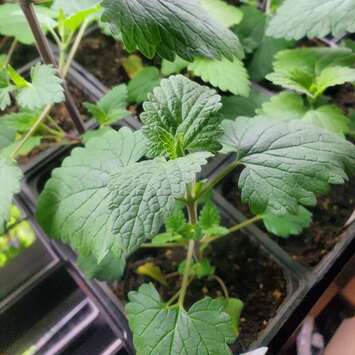
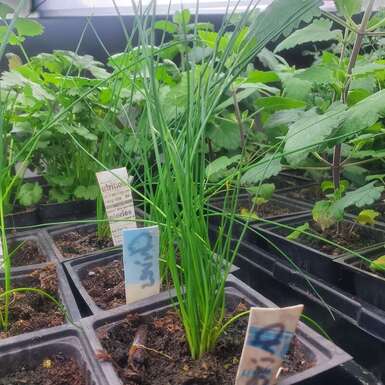
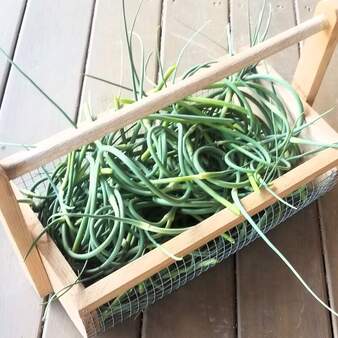
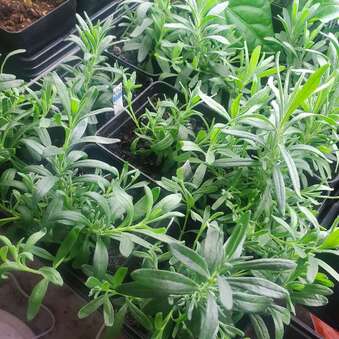
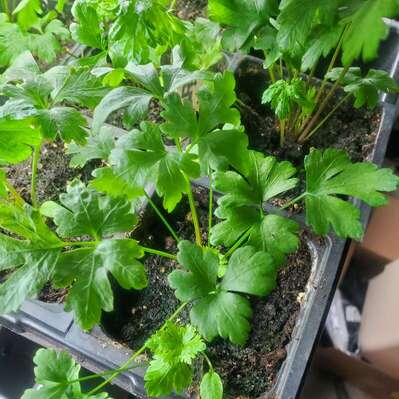
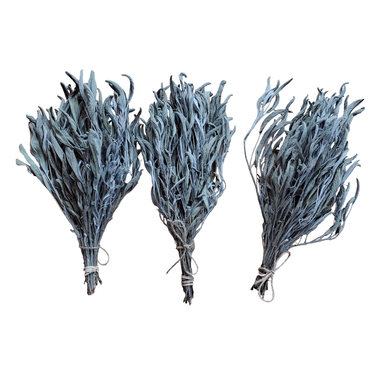
 RSS Feed
RSS Feed